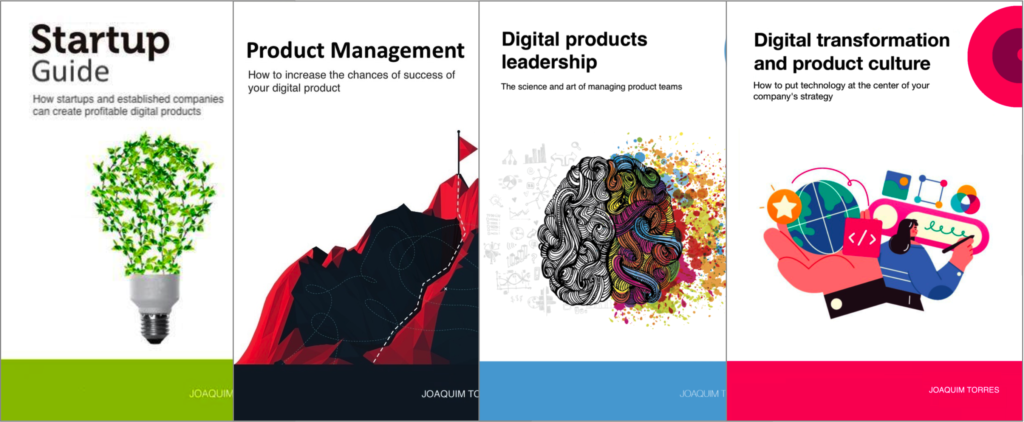Not Every AI Is Generative
7 de October, 2025AI-First and AI-Native: what’s the difference?
20 de October, 2025This is the fourth article in my series about AI and product management. Here are the previous ones:
-
AI Is Not Just About Productivity: where I explain that AI is a technology that, beyond increasing productivity across all areas of a company, should also be considered when building intelligent products — products that help us solve customer problems while generating results for the business.
-
Not Every Feature Needs AI: in this article, I explain the difference between deterministic and probabilistic solutions — the latter being AI-based. In certain situations, deterministic solutions are more suitable, while in others, probabilistic ones are more appropriate.
-
Not Every AI Is Generative: beyond generative AI, which creates text, images, videos, music, and even code, there’s also analytical AI, used for years to make recommendations, identify patterns, and predict trends.
Today, let’s discuss the hype surrounding conversational interfaces.
Since the rise of generative AI, many people have begun to believe that the future of interfaces will be conversational, with everything functioning like a chat. But conversation isn’t always the most natural, efficient, or enjoyable way to interact with a digital product.
Talking to a machine can feel intuitive, but only to a certain extent. When a task is well-structured, repetitive, or requires visual comparison, a well-designed graphical interface is still faster, more predictable, and more satisfying.
The other day, I heard from a data team that had built a reporting system with a conversational interface. At first, it was a success. But after some time, people stopped using it. When they replaced the chat with a more traditional interface — with buttons and filters — usage started to grow again.
At Politiq.ai, a new product by Inteligov, where I serve on the advisory board, Raphael Caldas, the company’s founder and CEO, shared a similar story:
The tool originally had a chat with eight functions: searching for news, drafting bills, generating insights from public hearings, and more. The quality of the prompt had a big impact on the results. After we replaced the chat with a more guided interface, both the experience and usage improved significantly.
Now, instead of typing long instructions, users simply choose what they want to do: to see a parliament member’s profile, they click the option and type the name; to get insights from a public hearing, they paste the YouTube link. Everything became more direct and easier to use.
These examples show that the best interface isn’t the most modern one; it’s the one that reduces friction.
Conversation is natural between people, but it’s not always the best metaphor for interacting with systems. In many cases, too much freedom in a chat leads to uncertainty, while a well-designed interface provides clarity and control.
That doesn’t mean conversational interfaces don’t have their place. They shine in contexts where flexibility, ambiguity, or exploration are integral to the experience, such as when the user is unsure of what they’re looking for, when the space of possibilities is too vast for predefined options, or when creativity and iteration are crucial components of the task.
In those cases, conversation can be the fastest way to get started, learn, or co-create. However, even then, the best experiences often combine both worlds: a conversational layer to express intent, and structured elements, such as buttons, menus, or visual summaries, to turn that intent into action.
Just as not every feature needs AI and not every AI needs to be generative, not every interface needs to be conversational. The form of interaction should serve the user’s context and goal, not the hype of the technology.
In the next and final article in the series “AI and Product Management”, we’ll explore the difference between AI-first and AI-native.
Workshops, coaching, and advisory services
I’ve been helping companies and their leaders (CPOs, heads of product, CTOs, CEOs, tech founders, and heads of digital transformation) bridge the gap between business and technology through workshops, coaching, and advisory services on product management and digital transformation.
Gyaco Podcasts
At Gyaco, we believe in the power of conversations to spark reflection and learning. That’s why we have three podcasts that explore the world of product management from different angles:
- Produto em Pauta: In the new season, titled “Beyond the Buzzwords”, Felipe Castro and I demystify product terms with real examples from our clients. Available on YouTube and Spotify. Recorded in Portuguese, with English subtitles on YouTube.
- Product Chronicles, the Brazilian Way: with Fábio Martinelli Duarte and Paulo Caroli — the Brazilian way of building products: stories, challenges, and lessons learned, featuring case studies from our clients. Available on YouTube and Spotify. Recorded in English, with Portuguese subtitles on YouTube.
- Beyond the Article, Expanded by AI: C.L.A.R.A. (Creative Language AI for Reflective Augmentation) chats with my AI clone, JocAI, expanding on my articles with new perspectives. Available on YouTube and Spotify. Thanks to AI, episodes are available in English, Spanish, and Portuguese.
Digital Product Management Books
Do you work with digital products? Do you want to know more about managing a digital product to increase its chances of success, solve its user’s problems, and achieve the company objectives? Check out my Digital Product Management books, where I share what I learned during my 30+ years of experience in creating and managing digital products:
- Digital transformation and product culture: How to put technology at the center of your company’s strategy
- Leading Product Development: The art and science of managing product teams
- Product Management: How to increase the chances of success of your digital product
- Startup Guide: How startups and established companies can create profitable digital products

